- Home
- Antonia Fraser
Gunpowder Plots Page 13
Gunpowder Plots Read online
Page 13
CHAPTER SIX
Making Fireworks
BRENDA BUCHANAN
‘when all the fire is lit and the guns go off, and the rockets,
fire tubes, squibs, and balls go hither and thither nothing
can be seen but smoke and fire, and verily it seems then to
be the fire imagined in hell’
Vannoccio Biringuccio, Pirotechnia (1540)
Bonfire Night owes its special place in English life and history to the events of four hundred years ago when king and Parliament came close to being destroyed in a massive explosion of gunpowder. But the celebration of that deliverance has shifted over the years from a focus on the perpetrators of the plot, echoed in the name ‘Guy Fawkes Night’, to the observance of a more general festival in the cycle of the year, coming between Harvest Festival and Christmas and referred to uncontroversially as ‘Bonfire Night’. This secularization of the Fifth of November not only allows it to be celebrated without any religious bigotry, it also enables it to be placed firmly in the context of the historically long-standing and geographically widespread celebrations involving bonfires, coloured smoke, sparkles and bangs. These extravaganzas preceded the mid-ninth century AD discovery of gunpowder in China, but then absorbed that new and powerful feature into the range of celebrations. At times such as the New Year, for example, the Chinese would welcome the occasion by throwing bamboo on a fire. When heated, the air within the bamboo exploded with a loud crack – giving rise to the name pao chang or ‘firecracker’. But when gunpowder was discovered and became available, it was packed into the bamboo tube and yen huo, a ‘firework’, was created. Thrown on the bonfire as tradition dictated, the explosion would be even more exciting. As fireworks developed, even the Chinese court was not immune to the panic they might cause. At an indoor display in 1264 the empress-mother was sufficiently frightened by an ‘earth rat’, ti lao shu, a tube of bamboo filled with gunpowder that rushed around on the ground, that she stood up, ‘gathered her skirts about her’, and ordered the festivities to stop.
Seen in this historical context, as in its later manifestations, gunpowder is ethically neutral. It may seem fitting that the saving of the establishment from the murderous intentions of the gunpowder-plotters should be celebrated by gunpowder-fireworks, but against the unholy trinity of ‘Gunpowder Treason and Plot’ of the old rhyme must be set the progressive trio of ‘Gunpowder, Compass and Printing Press’, long held to be significant forces for good in the world. In an argument that remains familiar, gunpowder owed its place in this pantheon to its perceived contribution to peace, for it was thought to be so devastatingly and destructively powerful that it would end wars – no sane person would do battle. Sadly, it was clear by the early seventeenth century that this was not the case, but the neutrality of gunpowder if not its place among the virtues was preserved, for despite its use by man as a tool of aggrandizement and oppression, it came to be valued for its role in the development of mining, trade and settlement, and in national and private festivities.
Gunpowder-making is more of a technology than a science. It is concerned with the mixing together in varying proportions of three basic ingredients: saltpetre, sulphur and charcoal. Of
these, saltpetre (potassium nitrate) is the most important in terms of proportion and significance, for it provides the oxygen necessary for the flame to take hold when the mixture is fired; sulphur’s contribution is to permit combustion at a lower temperature than would otherwise be the case; and charcoal, with the sulphur, provides the essential fuel.
Gunpowder was becoming known in Europe from the mid-thirteenth century, but its manufacture was little understood. The English writer John Bate described it in poetic words in 1634: ‘The Saltpeter is the Soule, the Sulphur the Life, and the Coales the Body of it…’ More prosaically, the fundamentals of the subject were summed up in the opening lines of a paper presented to the Royal Society of London by Thomas Henshaw in 1662 and published in 1667. Here, the essence of the process is shown to be the incorporation of the three ingredients with such thoroughness that a grain of gunpowder would then contain each in its correct proportion. This degree of incorporation would not be achieved by a casual stirring – it required a firm mixing under pressure. This was first done manually with a pestle and mortar, but from at least the sixteenth century this tiring process of limited scale was mechanized by the harnessing of animal- and water-power. The contents of rows of mortars were pounded by banks of stamps descending rhythmically, but the very vigour of this operation carried the danger of overheating and explosion, and so in 1772 stamps were outlawed in Britain except in the special circumstance of the production of very fine powder. They were replaced by heavyweight vertical edge runners, at first of stone and then of iron, that trundled over a curbed bed, grinding, mixing and compressing the ingredients – on the principle of the rolling pin rather than the pestle. Neither method involved a chemical transformation, and so in the early days the lightly ‘mealed’ or ‘serpentine’ powder would over time and during transit separate out again into its original ingredients. From the fifteenth century this disadvantage was overcome by ‘corning’, a practice by which the dampened incorporated powder was pressed through a sieve. The consolidated grains, resembling grains of corn, were then dried and proved – by simple processes that grew more sophisticated over time. There were to be further refinements and improvements, especially as with a growing expertise it became possible to regulate the force of the powder by varying the proportions used in the recipe and the size of the grains produced. But although the basic stages of gunpowder-making remained the same for war and peace, the military advances were not necessarily adopted for all festive fireworks. For example, corned powder could burn too rapidly for display purposes, and so a fine mealed powder remained in use for some of these occasions; and charcoal could be less finely powdered to produce a good display of sparks as a rocket rose in the sky.
A persistent problem over the years was that of storing gunpowder. The system in Britain, by which the Board of Ordnance relied (until the second half of the eighteenth century) on powder purchased from private manufacturers, provided some opportunity for regulating supplies. Nevertheless, there were always considerable stores held in and around London: at the Tower from the earliest gunpowder times, at Greenwich from the late seventeenth century; and at Purfleet from the 1760s, together with unknown quantities in the hands of private manufacturers and merchants. The danger of an explosion was ever-present. In 1584, for example, the Privy Council ordered that forty lasts of powder (each of twenty-four barrels or 2,400 lbs), stored in a house on Tower Hill, should be moved because here ‘rogues and vagabonds oftentimes lodge in the night and burn straw to warm themselves.’ But as well as the visible danger of sparks and fire, there was also the more insidious one of damp and decay, by which gunpowder could be just as effectively disabled. The high proportion of potassium nitrate in gunpowder makes it very hygroscopic or moisture-absorbent. The enemy is not floodwater, though that may have played a part in the decay of gunpowder in the holds of ships at sea, but atmospheric damp, present in many storage places, especially cellars. Oak barrels, each holding a ‘short’ hundredweight (one hundred pounds), or less commonly a proportion of that, offered some protection, and their ease of handling meant that they could be turned over regularly to prevent the formation of damp clots of powder; but the problem of deterioration remained a challenge. In this respect, corned powder was an improvement upon mealed or serpentine, but it still permitted the spread of moisture, a deficiency that was not addressed until the introduction of hand-operated screw presses, probably in the early eighteenth century. The more dense structure that resulted gave some, though still inadequate, protection against damp.
This problem has a particular relevance to the story of the Gunpowder Plot, for, as shown by the records of the Board of Ordnance, the powder that was recovered from the cellars of Parliament was ‘decayed’. The Debenture Book (WO 49) reads:
From the Parliament Howse Septimo die Novembris 1605 anno Regni Regis Jacobi tertio Receaved into his Majesty’s Store within The office of The ordenaunce from out of the vault undernethe the Parliament howse Corne powder xviii hundred weight decaied which was there laide and placed for the blowinge up of the said howse and destruction of the kings Majestie, the nobilitie, and Commonaltie there assembled. Receaved as aforesaid Corne powder decaied: xviii hundred weight.
This account shows that the powder had been corned, and so it is unlikely that the grains would have separated out into the three ingredients, the fate of the earlier, serpentine powder. But it would have remained susceptible to damp, and it was probably this factor which led to its decay, rendering it unusable. Blowing up king and Parliament with damp, clotted gunpowder, even eighteen hundredweight of it, would have been a difficult proposition.
As already mentioned, gunpowder was in all probability first discovered in the mid-ninth century in China. It is likely this came about in the course of the search by Taoist alchemists for the tantalizing but unattainable elixir of life. Materials would be collected, refined and experimented on in simple laboratories, and it was only a matter of time before the three ingredients of gunpowder were mixed together and inflamed, with exciting results. It hardly needs saying that combustible materials were long known to be capable of burning, the distilled petroleum or naphtha of Greek Fire being especially feared in sea battles from the seventh century AD, but the early gunpowders, even those with a low saltpetre content, had the added power of deflagration, that is, of a sparkling combustion and a ‘whoosh’ like a rocket. As the saltpetre content was increased, the mixtures developed propellant qualities, capable of projecting rockets and incendiary smoke balls. With a yet higher proportion of saltpetre, an explosion could be achieved in an enclosed container, capable of bursting its walls and sending the contents flying.
By the mid-eleventh century we have the first written formulae for gunpowder in a Chinese treatise, the typical proportions (saltpetre 50.5% : sulphur 26.5% : charcoal 23.0%) suggesting the manufacture of a weak explosive. Over the years the saltpetre proportion was increased in both the civilian and military fields, but with different aims. The visiting Jesuit priest Pierre d’Incarville, for example, writing on Chinese fireworks in 1763, noted in his account of ‘Chinese Fire’ that a saltpetre proportion of 86.6 per cent was used for the finest floral effects, and 60.6 per cent for the coarsest. But the military was not about creating wonderful effects – the aim was in general that of producing a strong and destructive powder. For this purpose in Britain, a standard ratio (saltpetre 75% : sulphur 10% : charcoal 15%) was established from the 1780s, which upon firing would produce a ‘brisant’ or violent explosive power. A lower rate of saltpetre, in the low 60s per cent, was used in mining for blasting purposes, so that the rocks might be shaken but not shattered. Grain size was also significant: it must be matched to purpose as gunners and miners had to learn, and used to produce different effects in firework displays as d’Incarville observed.
The debt owed to China covers not only the recipes for gunpowder, but also the inventive proliferation of many sorts of festive fireworks. Instructions written towards the end of the sixteenth century, for example, in Shen Pang’s Yuan Shu Tsa Chi (1593), refer to ‘resounding bombs’, ‘ascending fires’, ‘breaking waves’ (which gave several explosions in mid-air) and the ‘earth rats’ already described. There are variations in packing – loose or tight; in the release of sparks – many or few; and in the wrapping or enclosure used – layers of paper to form tubes, or baskets and bowls. Chinese manuals also contained advice on the different colours which may be given to smoke and flame by the addition of natural and chemical substances – for example, in the fourteenth century indigo for blue-green, cinnabar for purple, and lignite and soap-beans for black. To achieve the greatest effect, many of these varieties of fireworks were gathered onto a single wooden framework, a temporary structure that was later to reach its greatest extravagance in Europe, where it was known as a ‘machine’ – something made to support a grand display.
Fireworks changed little over the years, and many of the differences of construction, content and effect have been simple
variations on earlier practice. Most were composed of a case capable of closure, a firework mixture, and a method of ignition. The exception was the ‘sparkler’, beloved by children of a less safety-conscious age because this was the firework that could be held in the hand. It was made of a piece of wire six to nine inches long, coated with a pyrotechnic mixture that produced a shower of sparks when ignited. Whirled at arm’s length it produced a pretty and innocent effect. But in general there were cases, usually made of paper, cut to the required dimension and then ‘sized’ with starch or flour paste. While still pliable the sheet was wrapped several times around a ‘former’ or ‘rowler’ to produce a tube of the required dimensions that hardened as it dried. The use of an appropriate paper for a particular design was important: that for rockets, and for Roman candles packed with alternating layers of gunpowder and high-rising stars, must be strong enough to withstand high pressures and temperatures; that for the whirring pin or Catherine wheel must have a good wet strength so that the tube packed with powder could be dampened again to wind round the centre of the firework; that for lances with their white or coloured fire must be capable of withstanding the rough handling that was to become an inevitable part of their use in creating portraits and messages. In addition, the paper tube must be capable of burning at the same rate as the mixture it contained or the effect would be spoilt. For displays requiring rapid ignition a ‘quick match’ was used – a regular fuse encased in a tube designed to keep up the temperature so that a near-simultaneous ignition of many fireworks could be achieved.
The need for a rocket to achieve ‘lift-off’ made this firework a special challenge: gunpowder was pressed into a tube and a long conical central hole was drilled into the mixture, which was retained in position by a clay plug or ‘choke’. When the rocket was ready for firing, steadied by a stick in an upright position in a container, the fuse was lit and the gunpowder in the tube burned rapidly outwards from the surface of the conical cavity. The internal pressure exerted force towards the upper end of the rocket, as the gaseous products of combustion escaped through a hole in the choke at its base. The rocket, guided by its stick, was propelled upward with its familiar ‘whoosh’. The tube was usually designed with a cap or head, separated from the main body and containing a further ‘bursting’ charge of powder. When fired by a time fuse at the apogee of the rocket’s climb, this released pellets of pyrotechnical material in the sky. At a firework display this may be called poetically a ‘garniture of stars’; in early battles in China, and with lime mixed with explosive, it may be called a ‘lime-fog’, blinding men and horses.
There has been a remarkable consistency in the ingredients of the propellant charge since at least the accounts by English writers John Babington and John Bate in the early seventeenth century, with a preference for mealed rather than corned powder, and the addition of extra charcoal to the basic recipe to slow down the rate of burning, provide more fuel and add the drama of sparks to the rising rocket. The power needed to get the rocket aloft limited the amount of pyrotechnical material available for release. To remedy this deficiency, large numbers of rockets were employed at a time, with several thousand fired in quick order at great displays in the past, to create the spectacle of a ‘bouquet of rockets’. In pursuit of a more effective individual firework there were experiments in England from at least the 1630s, with ‘balloons’ or ‘bombs’, later known as ‘shells’, fired from mortars. These were made of canvas of eight or nine thicknesses, and contained a slow-burning composition and a garniture of materials for a shower of stars. The mortars were not necessarily the military type, but might be ‘pasteboard guns’ strapped upright to a plank of wood. The shell was placed in the mortar with the fuse pointing down into a lifting charge
of loose gun
powder that was fired through the touch-hole of the mortar. At the experimental stage the advice of John Bate, ‘And while that burneth, retreat out of harm’s way’, would have been sensible, but by the end of the seventeenth century shells were coming into common use in displays as they were able to carry a more effective ‘payload’ of pyrotechnic material than the rockets.
It is appropriate to mention here the only comprehensive treatise on civilian pyrotechnics in Chinese literature, the Huo Hsi Lüeh (Treatise on Fireworks) by Chao Hsüeh-Min. This mid-eighteenth-century work was not printed until 1833, but it was known and appreciated by Chinese scholars, and by Westerners who learnt many of its secrets through Pierre d’Incarville’s paper of 1763. Chinese skills in colouring flame and smoke were noted earlier, but these now also included arsenical sulphides for yellow, cotton fibres for violet, verdigris and indigo for green, lead carbonate for lilac-white and pine soot and pitch for black smoke. But there were by then comparable developments in Europe: the French chemist Jean Appier had suggested the use of verdigris for a green coloration in the 1630s, and by the mid-eighteenth century powdered zinc was being used to produce a greenish-blue. An account written in 1845 by Claude-Fortuné Ruggieri, of the great family of Italian pyrotechnicians, then working in France, described many chemicals that have continued in use: barium for green, calcium for orange, copper for blue, sodium for yellow and salts of strontium for red. Until the middle of the nineteenth century Chinese fireworks continued to be regarded by many as the best in the world. However, a coming shift in the rankings was suggested by the fact that ‘Chinese Fire’, in which flame and smoke were illuminated by numerous silver sparkles derived from ground cast-iron (a triumph unknown in the West before d’Incarville’s mid-eighteenth-century account), would be

 Warrior Queens
Warrior Queens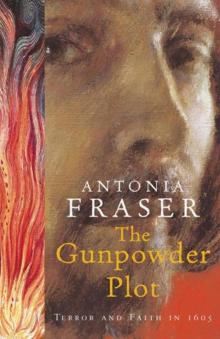 The Gunpowder Plot
The Gunpowder Plot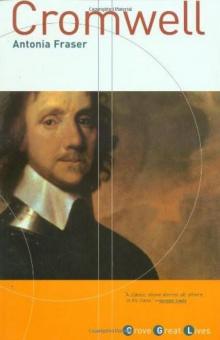 Cromwell
Cromwell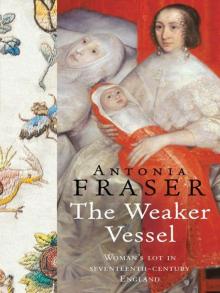 The Weaker Vessel: Women's Lot in Seventeenth-Century England
The Weaker Vessel: Women's Lot in Seventeenth-Century England Marie Antoinette: The Journey
Marie Antoinette: The Journey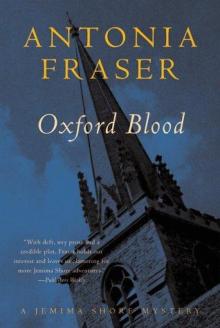 Oxford Blood
Oxford Blood Your Royal Hostage
Your Royal Hostage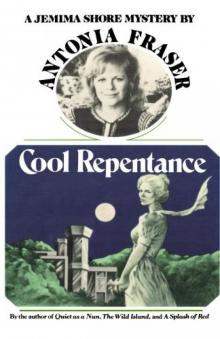 Cool Repentance
Cool Repentance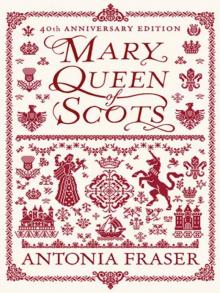 Mary Queen of Scots
Mary Queen of Scots Political Death
Political Death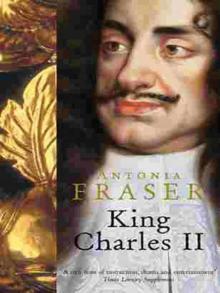 Royal Charles: Charles II and the Restoration
Royal Charles: Charles II and the Restoration My History: A Memoir of Growing Up
My History: A Memoir of Growing Up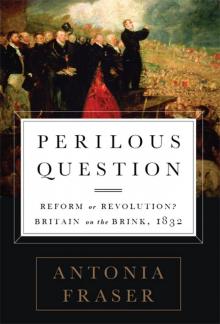 Perilous Question: Reform or Revolution? Britain on the Brink, 1832
Perilous Question: Reform or Revolution? Britain on the Brink, 1832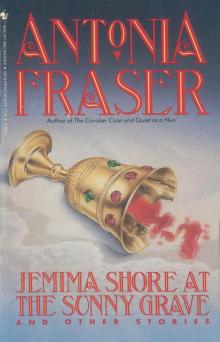 Jemima Shore at the Sunny Grave
Jemima Shore at the Sunny Grave A Splash of Red
A Splash of Red Must You Go?: My Life With Harold Pinter
Must You Go?: My Life With Harold Pinter Love and Louis XIV: The Women in the Life of the Sun King
Love and Louis XIV: The Women in the Life of the Sun King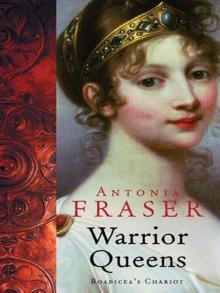 The Warrior Queens
The Warrior Queens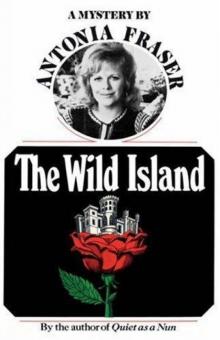 The Wild Island
The Wild Island Quiet as a Nun
Quiet as a Nun Perilous Question
Perilous Question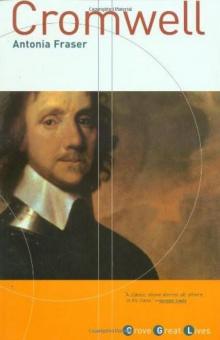 Cromwell, the Lord Protector
Cromwell, the Lord Protector Gunpowder Plots
Gunpowder Plots The Wild Island - Jemima Shore 02
The Wild Island - Jemima Shore 02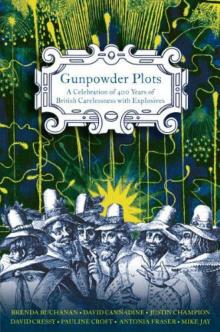 Gunpowder Plots: A Celebration of 400 Years of Bonfire Night
Gunpowder Plots: A Celebration of 400 Years of Bonfire Night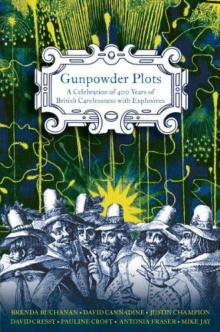 Gunpowder Plots_A Celebration of 400 Years of Bonfire Night
Gunpowder Plots_A Celebration of 400 Years of Bonfire Night Marie Antoinette
Marie Antoinette Must You Go?
Must You Go? My History
My History